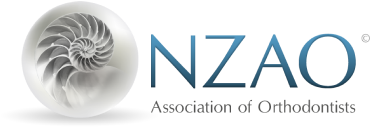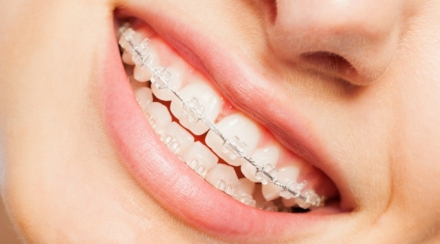Invisalign has become a popular choice for those seeking to straighten their teeth without the traditional metal braces. However, the cost of Invisalign treatment in New Zealand can vary significantly. This guide will break down the factors influencing the price, provide tips on finding affordable options, and explain what to expect from the overall treatment cost.
Learn more: The Ultimate Guide to Invisalign Clear Aligners
The cost of Invisalign can vary, but generally, you can expect to pay anywhere from $5,000 to $12,000 or more. That might sound like a lot, but it’s similar to the cost of traditional braces.
Find your local Orthodontist here, to enquire further about the cost of Invisalign
Factors that affect the cost
The price of Invisalign treatment in New Zealand can vary significantly, influenced by several key factors:
- Complexity of your dental issue: Simple cases typically cost less than complex ones requiring extensive tooth movement.
- Length of treatment: Shorter treatment times generally equate to lower costs.
- Orthodontic clinic: Different clinics have varying pricing structures and service offerings.
- Number of aligners needed: More severe cases may require more aligners, increasing the overall cost.
- Additional dental work: If you need extractions, fillings, or other dental procedures before or during Invisalign, this can add to the expense.
- Invisalign technology: Some advanced Invisalign options, like Invisalign i7 or Invisalign Teen, might have higher costs.
- Geographic location: Costs can vary between urban and rural areas.
What’s included in the price? Typically, the cost covers:
- Initial consultation and assessment
- Dental records (photos, scans, X-rays)
- Custom-made Invisalign aligners
- Regular check-ups during treatment
- Retainers to maintain your new smile.
Potential additional costs:
- Extractions or other dental work needed before Invisalign
- Replacement aligners if lost or damaged
- Additional aligners if required to achieve desired results
Payment options
Many orthodontists offer flexible payment plans to make Invisalign more affordable.
Important: Always get a detailed cost breakdown from your orthodontist before starting treatment. This will help you understand exactly what you’re paying for and avoid unexpected expenses.
Finding an Affordable Orthodontist in New Zealand
You can easily find all the specialist orthodontists in your area with the click of a button!
Having said that, finding the right orthodontist often starts with a simple word-of-mouth recommendation. Chances are, you know someone who’s had Invisalign or braces and can share their experience. Asking friends, family, or colleagues about their orthodontic journey can be a great starting point. Their personal recommendations can give you valuable insights into different orthodontists in your area.
Remember: While cost is important, it shouldn’t be the only factor in choosing an orthodontist. Experience, qualifications, and patient reviews are also crucial considerations.
Cheaper Alternatives to Invisalign: Is it Worth the Risk?
While Invisalign offers a convenient and effective way to straighten your teeth, it’s understandable that you might be looking for more affordable options. There are a few alternatives, but it’s important to weigh the potential cost savings against the risks involved.
DIY Aligners
One option gaining popularity is DIY aligners, offered by companies that allow you to create a treatment plan based on impressions you take at home. While these options can be cheaper than traditional orthodontics, they come with major drawbacks. Without the supervision of a specialist orthodontist, you risk misaligned teeth, bite problems, and even damage to your jaw. These issues can be costly and time-consuming to correct.
- Incorrect tooth movement: DIY aligners lack the precision of orthodontically designed ones, leading to misaligned teeth or an improper bite.
- Increased risk of cavities and gum disease: Poorly fitting aligners can trap food particles, causing dental problems.
- Root resorption: Excessive pressure from improperly fitted aligners can damage the roots of your teeth.
- Jaw pain and discomfort: Incorrect bite alignment can cause jaw pain and discomfort.
- Treatment failure: DIY aligners may not effectively straighten your teeth, resulting in wasted time and money.
- No professional oversight: You won’t have an orthodontist monitoring your treatment, which can lead to serious complications.
Learn more: Are DIY aligners safe for straightening teeth at home?
Dentists
Another alternative is general dentists who offer clear aligner treatments, although dentists are not usually much cheaper than orthodontists. Choosing a dentist might seem like a cost-saving option, but again, it’s important to consider the potential risks involved:
- Limited expertise: Dentists have a broad knowledge of oral health and we highly recommend visiting your dentist regularly. However, orthodontists specialize in tooth alignment. This means orthodontists have in-depth training and experience in complex cases.
- Less advanced treatment options: Dentists may not offer the same range of orthodontic treatments or technologies as specialists.
- Potential for longer treatment times: Without specialized knowledge, treatment might take longer to complete.
- Increased risk of complications: Complex orthodontic issues might be mishandled, leading to complications that require additional treatment.
Orthodontists undergo several additional years of specialized training beyond general dentistry, giving them a deep understanding of tooth movement, jaw alignment, and facial aesthetics, which is why they are your best option for achieving a beautiful and healthy smile.
Ultimately, investing in a qualified orthodontist can save you time, money, and potential dental issues in the long run. often less expensive than specialist orthodontists, the level of expertise in complex orthodontic cases may vary. It’s essential to research the dentist’s experience and qualifications before proceeding.
Remember, the cheapest option isn’t always the best. Investing in a qualified orthodontist and a proven treatment plan like Invisalign can save you from potential complications and ensure you achieve the desired results for your smile.
Find a specialist orthodontist in your area:




